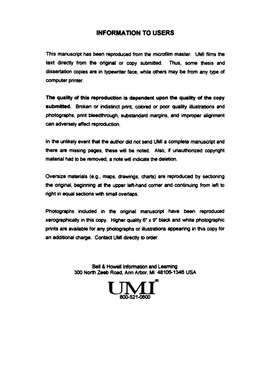| dc.contributor.advisor | Fletcher, John S., | en_US |
| dc.contributor.author | Olson, Paul Eugene. | en_US |
| dc.date.accessioned | 2013-08-16T12:30:48Z | |
| dc.date.available | 2013-08-16T12:30:48Z | |
| dc.date.issued | 2000 | en_US |
| dc.identifier.uri | https://hdl.handle.net/11244/5908 | |
| dc.description.abstract | The growth of plant roots in contaminated soils is of paramount importance to the success of phytoremediation. Field observations, coupled with chemical analysis, indicated that the presence of plant roots growing in the contaminated sludge corresponded with a visual soil restoration and dissipation of recalcitrant PAHs. The distribution and depth of plant roots from tolerant vegetation growing at these former sludge basins were species and age dependent. In general, tree and shrub roots penetrated the sludge to a greater extent (∼ 90 cm), compared to grasses (∼ 50 cm) and forbs (∼ 60 cm) at this site. However, PAH levels were significantly lower within the root zone (10--25% the concentration present beneath the root zone) regardless of the vegetation compared to the non-rooted sludge. Thus, tolerant vegetation invaded and colonized a former sludge basin, and through extensive root growth, fostered the natural attenuation and ecological recovery. | en_US |
| dc.description.abstract | Biomass measurements made on 31 mulberry trees of different ages and sizes were used to develop allometry relationships for both above and belowground components. These allometric relationships, in combination with the pollutant changes documented in this sludge basin, support the concept that an established plant community with associated microorganisms provides an ecologically stable, low cost, sustained bioremediation system for long-term treatment of sludge basins. | en_US |
| dc.description.abstract | Examination of volunteer vegetation growing in industrial sludge contaminated with polycyclic aromatic hydrocarbons (PAHs) has been used as a means of identifying particular plant species whose roots foster soil restoration and the degradation of organic contaminants. Aerial photographs taken over the last 25 years have been used to characterize plant invasion and plant succession that has resulted in the development of a diverse and healthy community of plants (51 species from 22 families) currently growing at this contaminated site. Differences between the plant community composition at the contaminated sludge basin and a non-contaminated site suggested that a select group of plants have favorable characters to colonize, grow and modify polluted soils. | en_US |
| dc.format.extent | xvii, 102 leaves : | en_US |
| dc.subject | Biology, Plant Physiology. | en_US |
| dc.subject | Phytoremediation. | en_US |
| dc.subject | Environmental Sciences. | en_US |
| dc.subject | Hazardous waste site remediation. | en_US |
| dc.subject | Ecology Research. | en_US |
| dc.subject | Biology, Botany. | en_US |
| dc.title | The role of vegetation in the phytoremediation and ecological recovery of hazardous waste sites. | en_US |
| dc.type | Thesis | en_US |
| dc.thesis.degree | Ph.D. | en_US |
| dc.thesis.degreeDiscipline | Department of Microbiology and Plant Biology | en_US |
| dc.note | Adviser: John S. Fletcher. | en_US |
| dc.note | Source: Dissertation Abstracts International, Volume: 60-12, Section: B, page: 6001. | en_US |
| ou.identifier | (UMI)AAI9957005 | en_US |
| ou.group | College of Arts and Sciences::Department of Microbiology and Plant Biology | |
